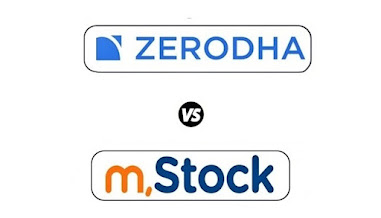Zerodha vs. m.Stock: A Comprehensive Comparison
In the dynamic world of online trading, choosing the right platform is crucial for investors. With an array of options available, two platforms that often find themselves in the spotlight are Zerodha and m.Stock. Both cater to the needs of traders, but which one is superior? Let's delve into a detailed comparison to find out.
User Interface and Experience
The user interface plays a pivotal role in trading platforms as it directly impacts user experience. Zerodha boasts a clean and intuitive interface, making navigation effortless for both seasoned traders and beginners. On the other hand, m.Stock offers a user-friendly interface optimized for mobile devices, ensuring traders can execute trades on the go seamlessly.
Pricing and Fees
Cost-effectiveness is a significant consideration for traders, and both Zerodha and m.Stock offer competitive pricing models. Zerodha is renowned for its low brokerage fees, with a flat rate per trade, making it an attractive option for frequent traders. Meanwhile, m.Stock offers commission-free trading on certain instruments, appealing to cost-conscious investors.
Range of Tradable Assets
The variety of tradable assets available on a platform is essential for diversification and maximizing investment opportunities. Zerodha provides access to a wide range of asset classes, including stocks, commodities, currencies, and derivatives, empowering traders with diverse options. Conversely, m.Stock primarily focuses on stock trading, limiting the scope for investors seeking exposure to other markets.
Research and Analysis Tools
Informed decision-making is key in trading, and robust research and analysis tools can provide traders with valuable insights. Zerodha offers a comprehensive suite of analytical tools, including real-time data, advanced charting, and customizable indicators, enabling traders to conduct in-depth analysis. While m.Stock provides basic research tools, it may not suffice for traders requiring advanced analytics for intricate trading strategies.
Customer Support and Reliability
Responsive customer support and platform reliability are paramount for traders, especially during volatile market conditions. Zerodha is renowned for its prompt customer service and reliable platform performance, ensuring traders can swiftly resolve any issues they encounter. Similarly, m.Stock prioritizes customer satisfaction and platform stability, striving to deliver a seamless trading experience.
Security and Regulations
Security is non-negotiable when it comes to online trading, and both Zerodha and m.Stock prioritize stringent security measures to safeguard users' funds and data. Zerodha adheres to regulatory standards and employs robust encryption protocols to protect user information. Likewise, m.Stock complies with industry regulations and implements multi-layered security measures to mitigate risks associated with cyber threats.
Conclusion
In conclusion, both Zerodha and m.Stock offer distinct advantages, catering to the diverse needs of traders. Zerodha excels in user interface design, cost-effectiveness, and research tools, making it a preferred choice for many traders. On the other hand, m.Stock stands out for its mobile-friendly platform and commission-free trading options, appealing to investors prioritizing convenience and affordability. Ultimately, the choice between Zerodha and m.Stock boils down to individual preferences, trading objectives, and the specific features that align with your investment strategy.



Comments
Post a Comment